I have always thought that elephant graveyards were the stuff of legend in Victorian adventure books like Rider Haggard’s King Solomon’s mines, or tales spun by boozy white hunters at the Muthaiga Club or Masai myths told around campfires.
Due to work, I had already decided to decline the invitation to join the 3-4 day rafting expedition even though it was AEP . But when I later heard that they would make a side trip to an elephant graveyard my interest was piqued. So we decided to RV mid-way and I came in with the re-supply 4x4.
This is a very bumpy 90 minute ride down a plantation track to an indigenous Temiar village.
My friend was working with a collective of several indigenous and one Malay villages to try and develop their “eco-tourism” potential. I generally recoil from that often fraudulent term but at least this is a local initiative without the corrupting influence of the government. And there very good reasons why they needed this source of income as I found out later.
The group had arrived already and, being rafters and not bushcrafters, it is not a true jungle camp but a clearing by the river near the village pontoon, a bamboo affair.
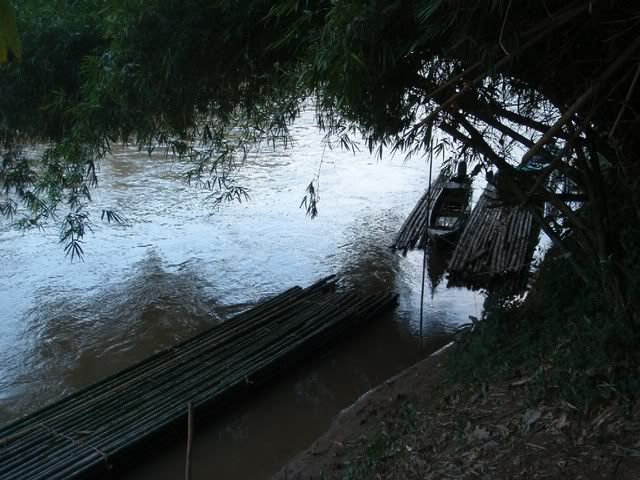
After finding out the elephant and wild boar risk, which can really ruin a good night’s sleep around here, as they are fond of night raids on village orchards and gardens, I set up the Hennessy at the edge of the clearing. This, by the way, is the prudent question to ask -not whether there are tigers around. An elephant trumpeting next to your basha at 2am is a certain heart attack.
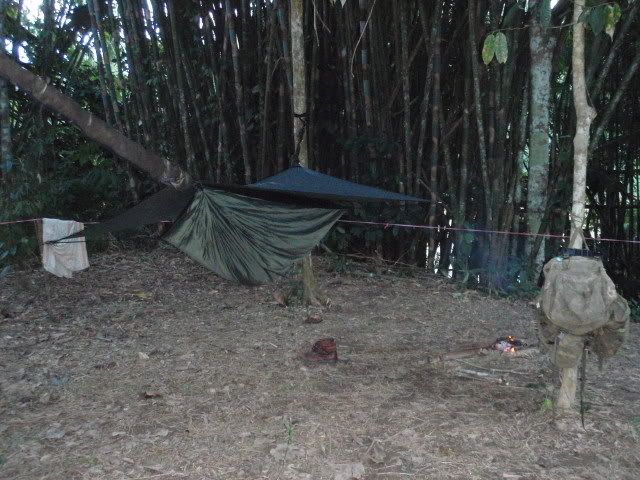
We spend the rest of the day lazing around camp, fiddling with kit or talking, as best we could, to the Temiar. My language skills are stretched this far north near Thailand and the dialect is pretty much unintelligible to even people from other parts of the country.
Some of us try our hand at tapping rubber with a tapper’s knife under the tutelage of Seli, the headman, who was a sheer delight to listen to. He has a rich basso voice like James Earl Jones (Mufasa in Lion King, Darth Vader). If he read out the alphabet and I’d listen to every syllable again and again. Fortunately he understands standard Malay.
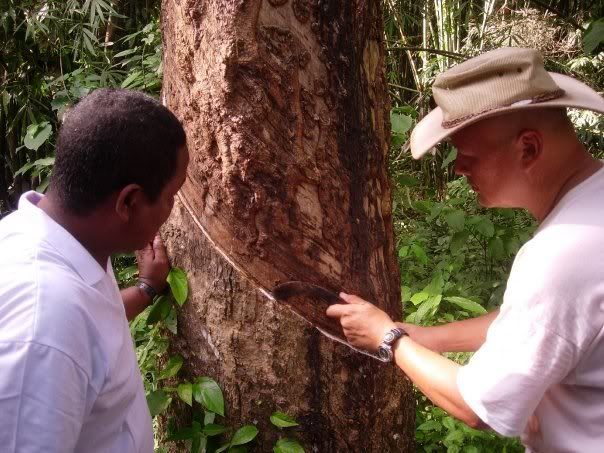
Later we speak and he tells me of the devastated forest, oil plantations, erosion and silting, water pollution and the absence of game not to mention the broken promises of the government and the regular harassment to become Muslims, which they did 10 years ago. They received some benefits e.g. electricity but after they ‘converted’ the promised ‘incentives’ were slow to materialise. Selling your soul for gold.
Technologically these people a mixed bag. Their bamboo technology is excellent but there is no knowledge or even recollection of fire pistons even though this is close to the centre of their use only a hundred years ago. Fires are started with lighter and matches. But they use natural materials in their bushcraft as these fish traps show.
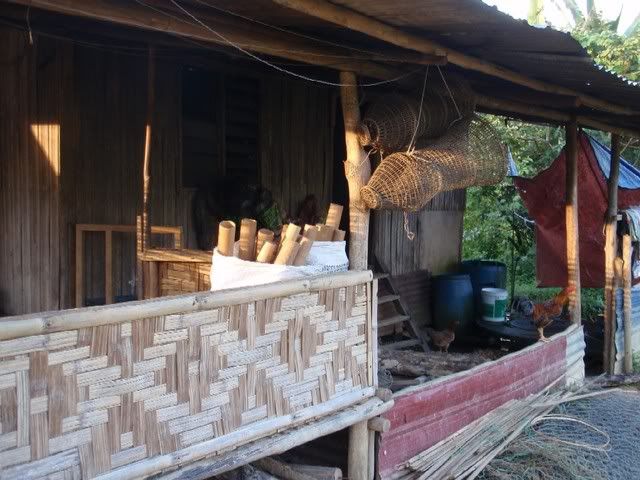
The women prepared ubi, or tapioca, from their garden and herbs for a ceremony. The outer skin is scorched and scraped off repeatedly. It is quite nice this way.

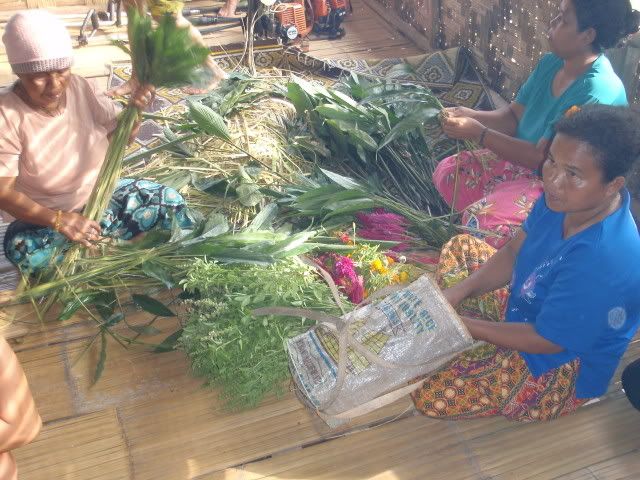
I spend time by the river soaking in the tranquility and later join the local lads in swimming
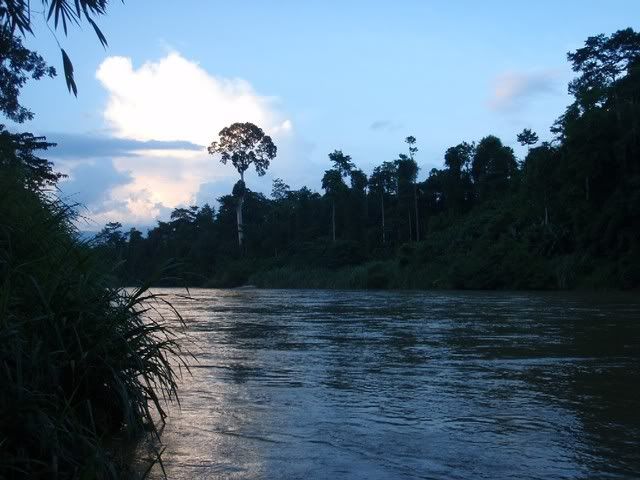
Later, after a meal of barbecued chicken and mixed dishes, which we brought in so as not to tax their resources, we take part in a sewang, a traditional ceremony to celebrate practically anything.
I am cultural show phobic and do not watch anything that smacks of tourist show as the culture kleptocrats of Malaysia’s government are even trying to usurp indigenous culture. But even I get into the act and become the first to join the women’s’ bamboo percussion octet.
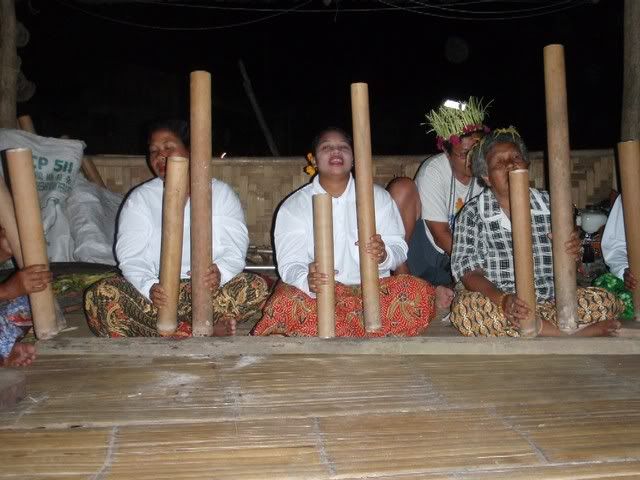
These women are hardy, they keep it up for nearly three hours (definitely not a culture show!) while my arms are getting tired after 20 minutes. The technique must be all in the wrist.
Their bamboo construction is impressive. The structures were supporting 30 people many of whom were jumping about while the others struck the floor. This little boy was rocked to sleep!

The next day we drift down river enjoying the impressive scenery.

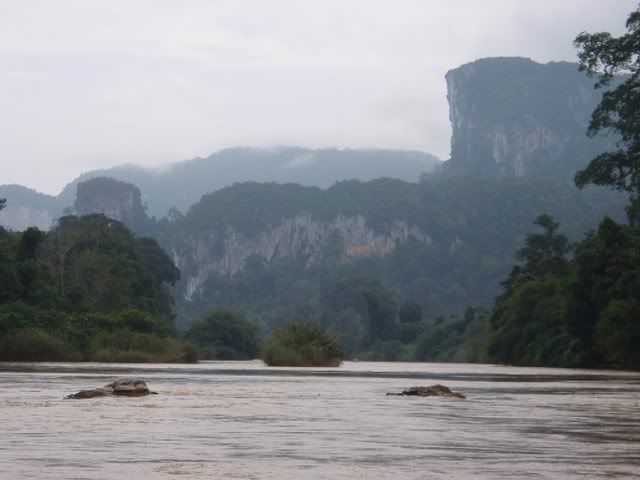
There is some white water but quite easy which suits me fine since after a few years of regular white water runs I am content to take photos instead of paddle.
I just love the limestone formations. This one reminds me of a slice of cake. Not a piece of cake though
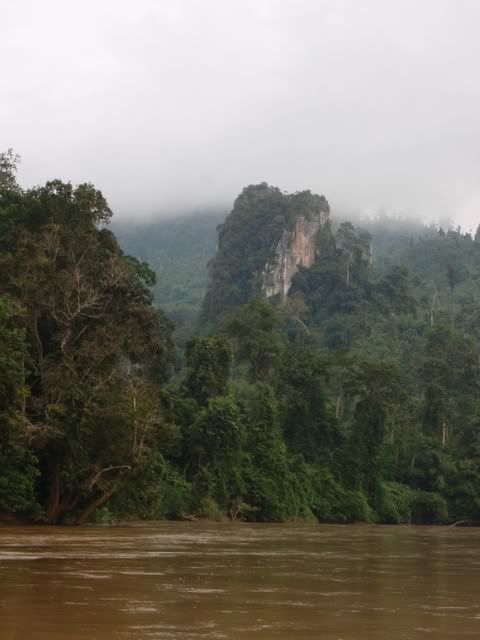
This looks like an Easter Island statue of a proboscis monkey.
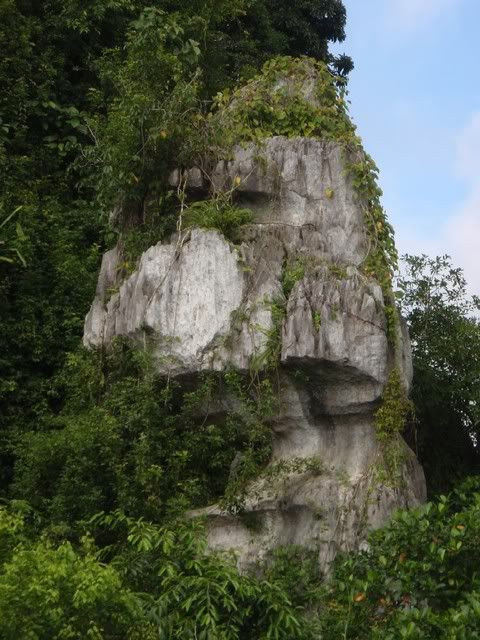
This is where the elephants come to drink
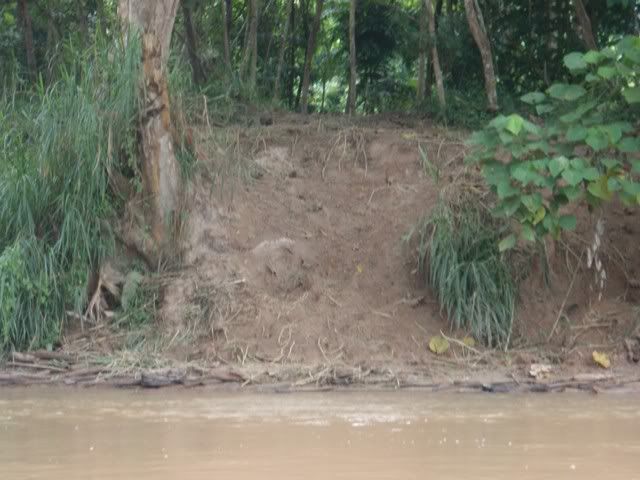
I wonder if anyone has ever entered this cave
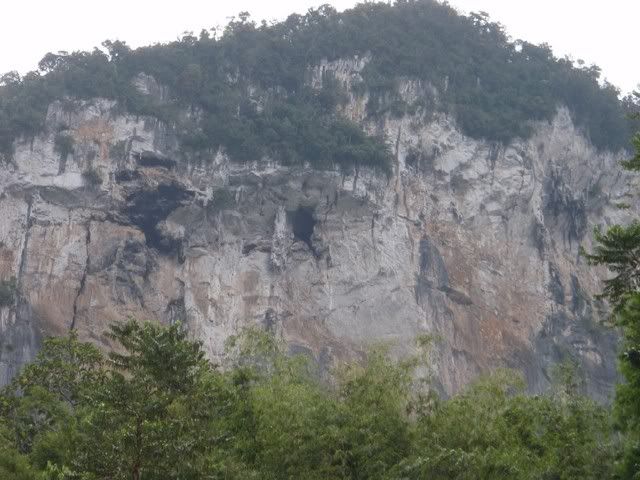
When this falls into the river I don’t want to be around
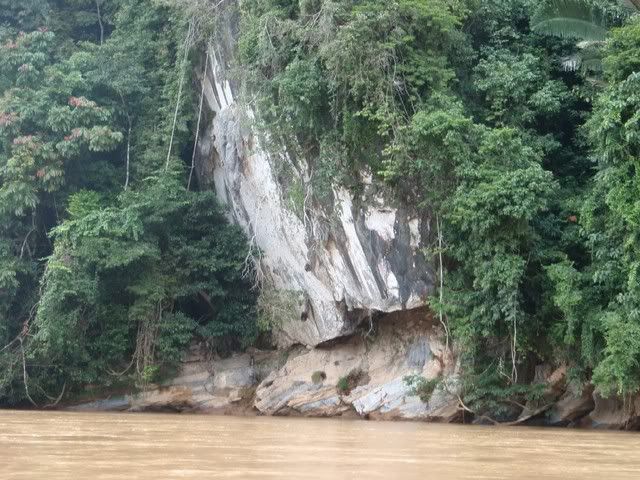
The local police come by to see how we were going. They have a pleasant job.

These caves are called the gateway to the Elephant graveyard in the local language. They are high above the water so I wonder how anyone got up there.
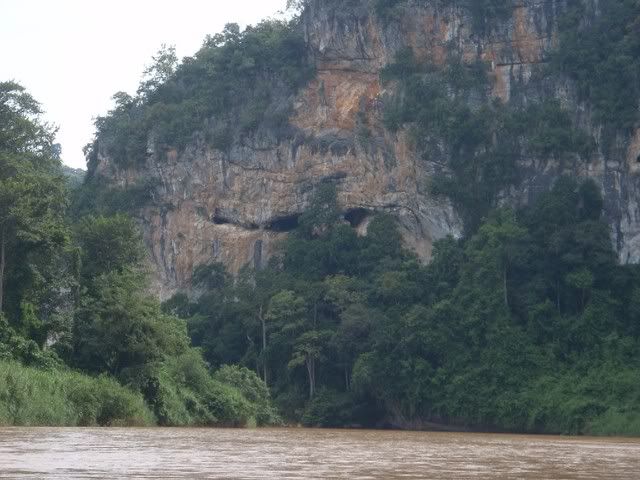
We glide to a stop under this overhang and tie up to a sizeable tree sticking out at 90 degrees to the cliff.
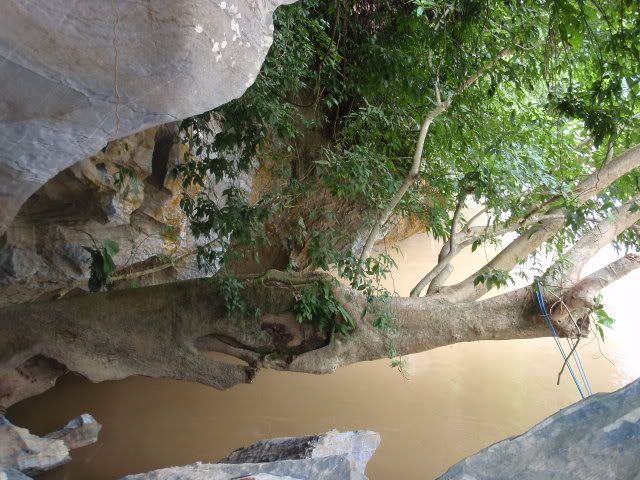
These people still know how to make bamboo rafts like this from a hundred years ago. I got the photo off the internet. Same river but a different section
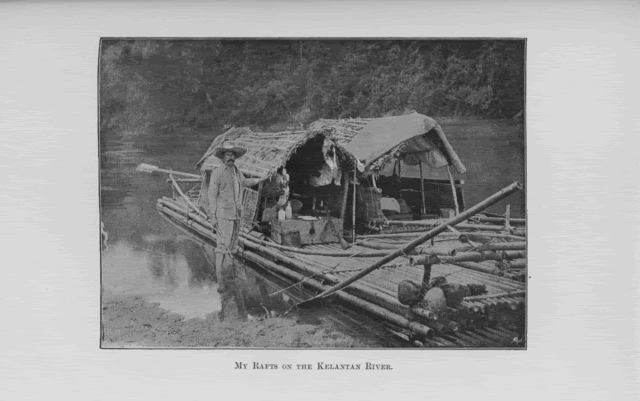
If you compare the construction of the pontoons and the raft you can see the similarities.
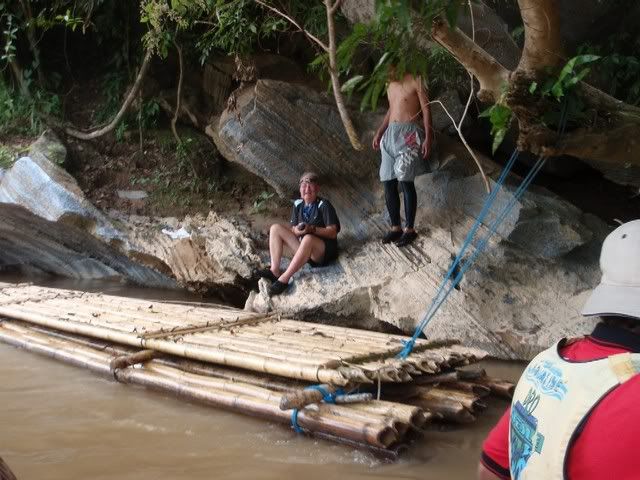
We slip into caving mode. Instead of climbing those sheer ramparts we take a back door into the graveyard. But our back door is a small cave requiring slithering on our back so how did the elephants get there? Through the jungle on the other side it seems - a long trip for us to make.
We go to the entrance first to take in the views.
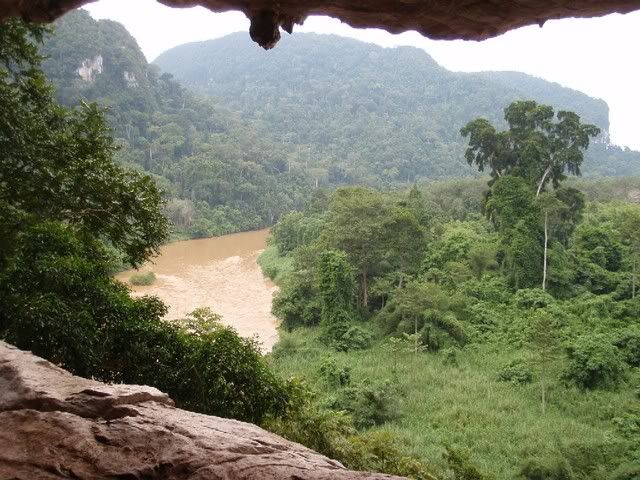
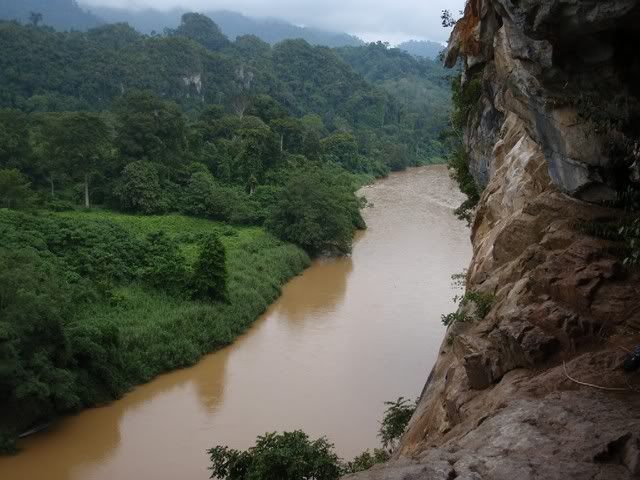
I wish I could remain behind for a day or two to get in touch with my inner caveman and watch the river and forest . The dawn and sunset must be pretty.
We then go to the graveyard. On the way we see a strange sign in a small cave.
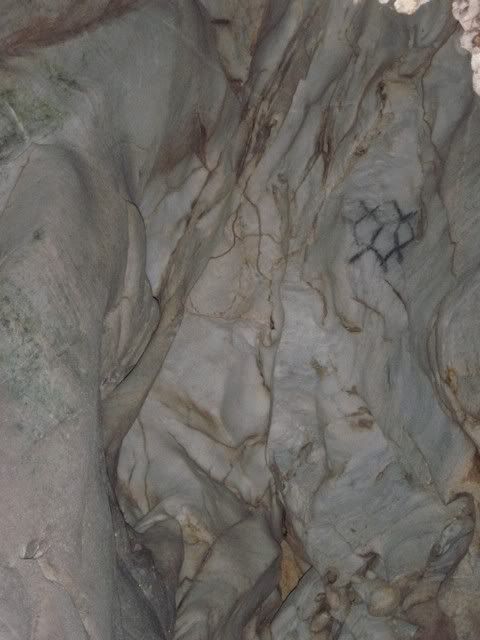
No one has any idea what it means. There are no signs or graffiti, modern or Neolithic in any cave but on the second day the group had stopped over at a Neolithic cave where archaeologists had a dig.
The grave yard is not an ancient graveyard littered with thousands of elephant bones as I half hope to see. Unlike the African plains, the jungle can decompose almost anything in a few years.
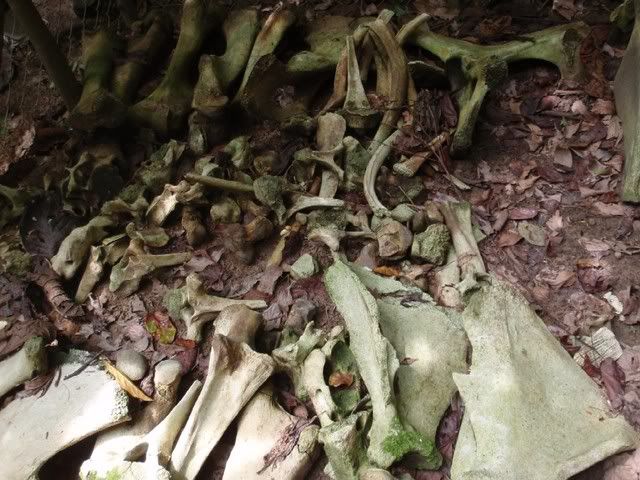
The Orang Asli say that they discovered the bones only two years ago but initially there was only one carcass. Several months later they found another only a few metres from the first.
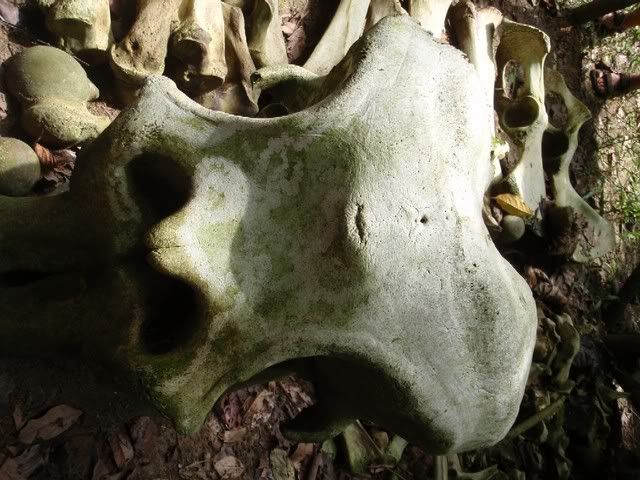
I remember reading in Iain Douglas Hamilton’s book that elephants would visit sites where their kin had fallen and spend time stroking the bones, especially tusks. In fact one report speaks of elephants making off with the tusks of deceased elephants. I am conscious that these are Asian elephants and the social structure may be different, if anything, probably more social than the Africans.
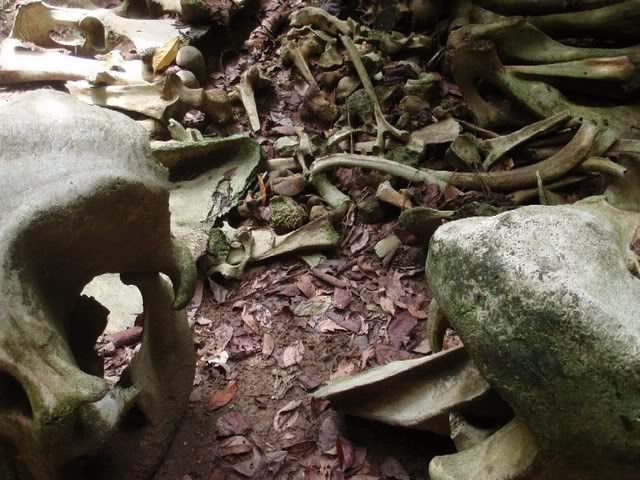
The OA say that for several months they found small tracks of a young elephant around the site, possibly the calf of the female (who died second).Eventually the OA decided to gather the bones together, whether out of a sense of respect or with an eye to a tourist attraction I do not know.

Returning to the river we have lunch and I decide to float the rest of the way, partly as I want some quiet time. At first only 4 people follow but then all but one decide to jump in as well. We drift for a hour past some interesting scenery. It is cool and tranquil.
On the way back I see many logging trunks over the rest of the day a grim reminder what the government and timber barons have in store for the forest and the people who depend on it.
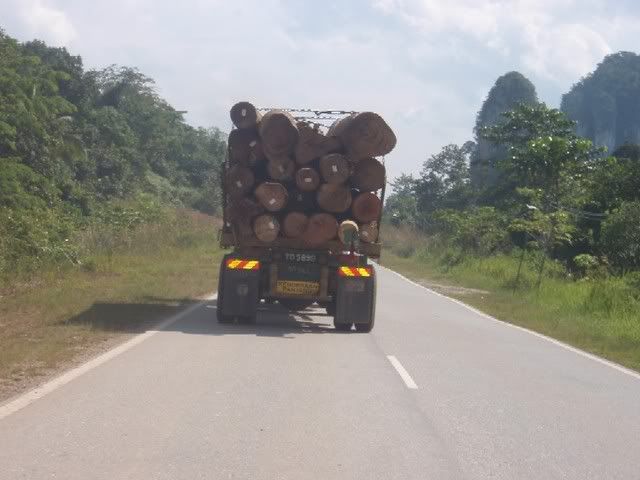
Due to work, I had already decided to decline the invitation to join the 3-4 day rafting expedition even though it was AEP . But when I later heard that they would make a side trip to an elephant graveyard my interest was piqued. So we decided to RV mid-way and I came in with the re-supply 4x4.
This is a very bumpy 90 minute ride down a plantation track to an indigenous Temiar village.
My friend was working with a collective of several indigenous and one Malay villages to try and develop their “eco-tourism” potential. I generally recoil from that often fraudulent term but at least this is a local initiative without the corrupting influence of the government. And there very good reasons why they needed this source of income as I found out later.
The group had arrived already and, being rafters and not bushcrafters, it is not a true jungle camp but a clearing by the river near the village pontoon, a bamboo affair.

After finding out the elephant and wild boar risk, which can really ruin a good night’s sleep around here, as they are fond of night raids on village orchards and gardens, I set up the Hennessy at the edge of the clearing. This, by the way, is the prudent question to ask -not whether there are tigers around. An elephant trumpeting next to your basha at 2am is a certain heart attack.

We spend the rest of the day lazing around camp, fiddling with kit or talking, as best we could, to the Temiar. My language skills are stretched this far north near Thailand and the dialect is pretty much unintelligible to even people from other parts of the country.
Some of us try our hand at tapping rubber with a tapper’s knife under the tutelage of Seli, the headman, who was a sheer delight to listen to. He has a rich basso voice like James Earl Jones (Mufasa in Lion King, Darth Vader). If he read out the alphabet and I’d listen to every syllable again and again. Fortunately he understands standard Malay.

Later we speak and he tells me of the devastated forest, oil plantations, erosion and silting, water pollution and the absence of game not to mention the broken promises of the government and the regular harassment to become Muslims, which they did 10 years ago. They received some benefits e.g. electricity but after they ‘converted’ the promised ‘incentives’ were slow to materialise. Selling your soul for gold.
Technologically these people a mixed bag. Their bamboo technology is excellent but there is no knowledge or even recollection of fire pistons even though this is close to the centre of their use only a hundred years ago. Fires are started with lighter and matches. But they use natural materials in their bushcraft as these fish traps show.

The women prepared ubi, or tapioca, from their garden and herbs for a ceremony. The outer skin is scorched and scraped off repeatedly. It is quite nice this way.


I spend time by the river soaking in the tranquility and later join the local lads in swimming

Later, after a meal of barbecued chicken and mixed dishes, which we brought in so as not to tax their resources, we take part in a sewang, a traditional ceremony to celebrate practically anything.
I am cultural show phobic and do not watch anything that smacks of tourist show as the culture kleptocrats of Malaysia’s government are even trying to usurp indigenous culture. But even I get into the act and become the first to join the women’s’ bamboo percussion octet.

These women are hardy, they keep it up for nearly three hours (definitely not a culture show!) while my arms are getting tired after 20 minutes. The technique must be all in the wrist.
Their bamboo construction is impressive. The structures were supporting 30 people many of whom were jumping about while the others struck the floor. This little boy was rocked to sleep!

The next day we drift down river enjoying the impressive scenery.


There is some white water but quite easy which suits me fine since after a few years of regular white water runs I am content to take photos instead of paddle.
I just love the limestone formations. This one reminds me of a slice of cake. Not a piece of cake though

This looks like an Easter Island statue of a proboscis monkey.

This is where the elephants come to drink

I wonder if anyone has ever entered this cave

When this falls into the river I don’t want to be around

The local police come by to see how we were going. They have a pleasant job.

These caves are called the gateway to the Elephant graveyard in the local language. They are high above the water so I wonder how anyone got up there.

We glide to a stop under this overhang and tie up to a sizeable tree sticking out at 90 degrees to the cliff.

These people still know how to make bamboo rafts like this from a hundred years ago. I got the photo off the internet. Same river but a different section

If you compare the construction of the pontoons and the raft you can see the similarities.

We slip into caving mode. Instead of climbing those sheer ramparts we take a back door into the graveyard. But our back door is a small cave requiring slithering on our back so how did the elephants get there? Through the jungle on the other side it seems - a long trip for us to make.
We go to the entrance first to take in the views.


I wish I could remain behind for a day or two to get in touch with my inner caveman and watch the river and forest . The dawn and sunset must be pretty.
We then go to the graveyard. On the way we see a strange sign in a small cave.

No one has any idea what it means. There are no signs or graffiti, modern or Neolithic in any cave but on the second day the group had stopped over at a Neolithic cave where archaeologists had a dig.
The grave yard is not an ancient graveyard littered with thousands of elephant bones as I half hope to see. Unlike the African plains, the jungle can decompose almost anything in a few years.

The Orang Asli say that they discovered the bones only two years ago but initially there was only one carcass. Several months later they found another only a few metres from the first.

I remember reading in Iain Douglas Hamilton’s book that elephants would visit sites where their kin had fallen and spend time stroking the bones, especially tusks. In fact one report speaks of elephants making off with the tusks of deceased elephants. I am conscious that these are Asian elephants and the social structure may be different, if anything, probably more social than the Africans.

The OA say that for several months they found small tracks of a young elephant around the site, possibly the calf of the female (who died second).Eventually the OA decided to gather the bones together, whether out of a sense of respect or with an eye to a tourist attraction I do not know.

Returning to the river we have lunch and I decide to float the rest of the way, partly as I want some quiet time. At first only 4 people follow but then all but one decide to jump in as well. We drift for a hour past some interesting scenery. It is cool and tranquil.
On the way back I see many logging trunks over the rest of the day a grim reminder what the government and timber barons have in store for the forest and the people who depend on it.

